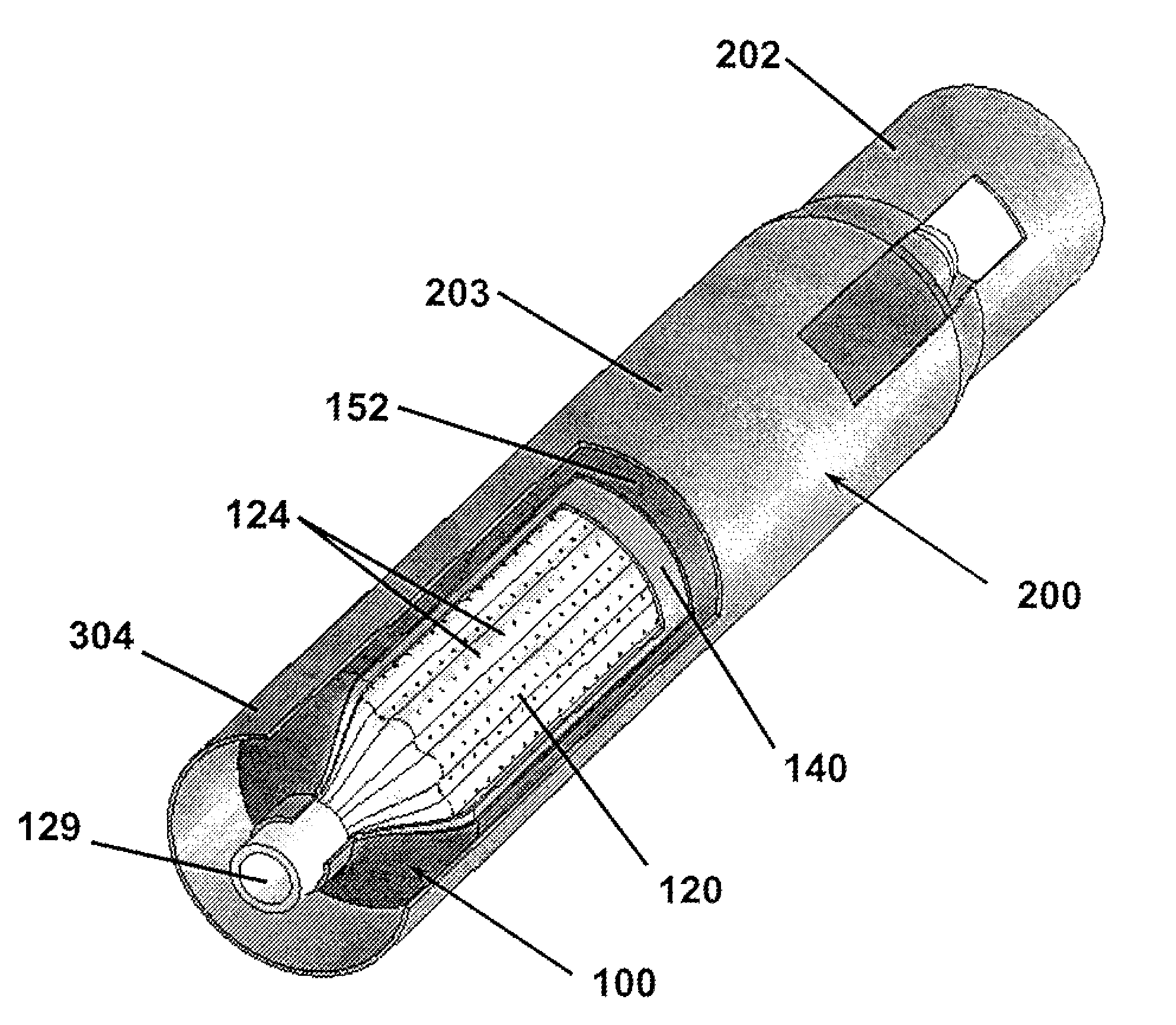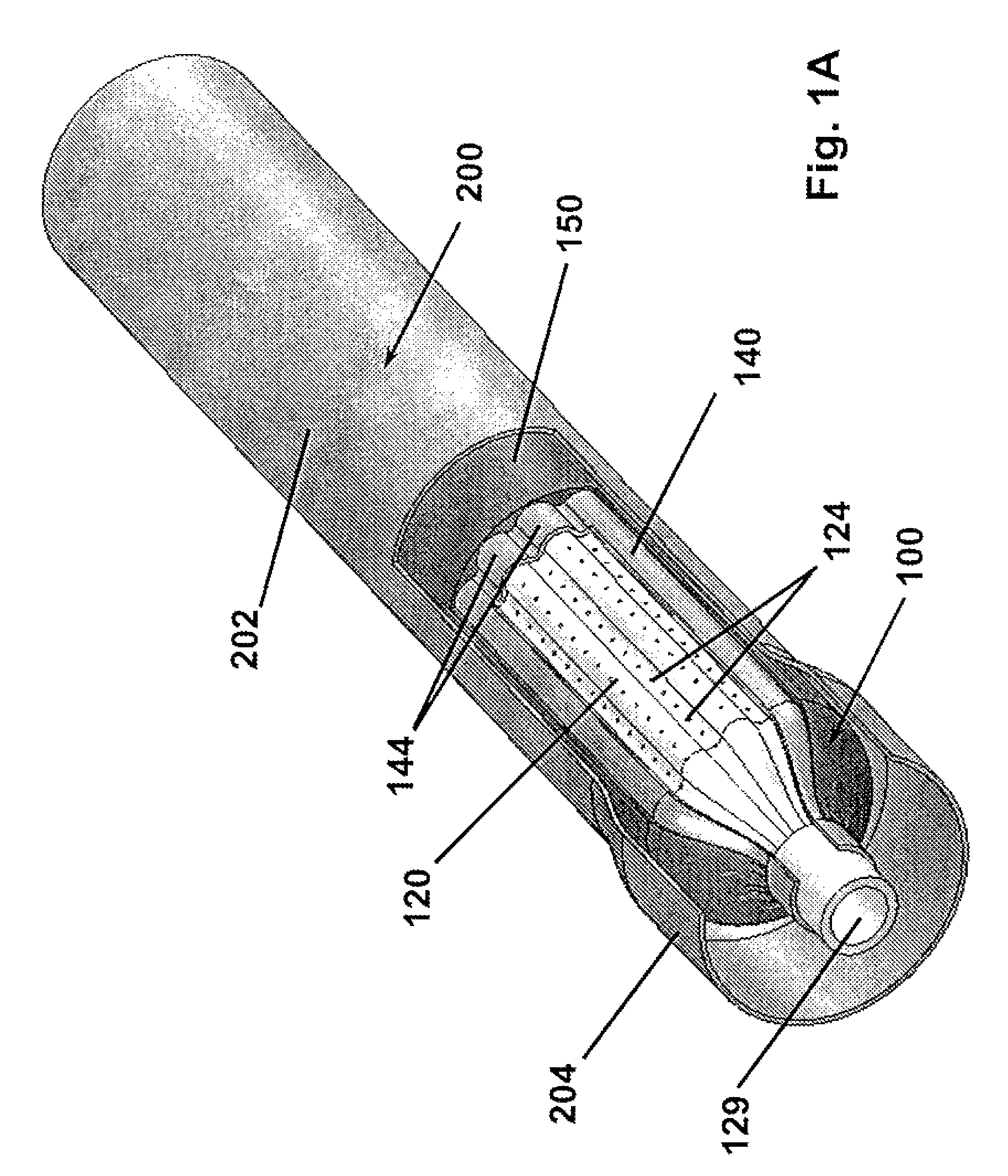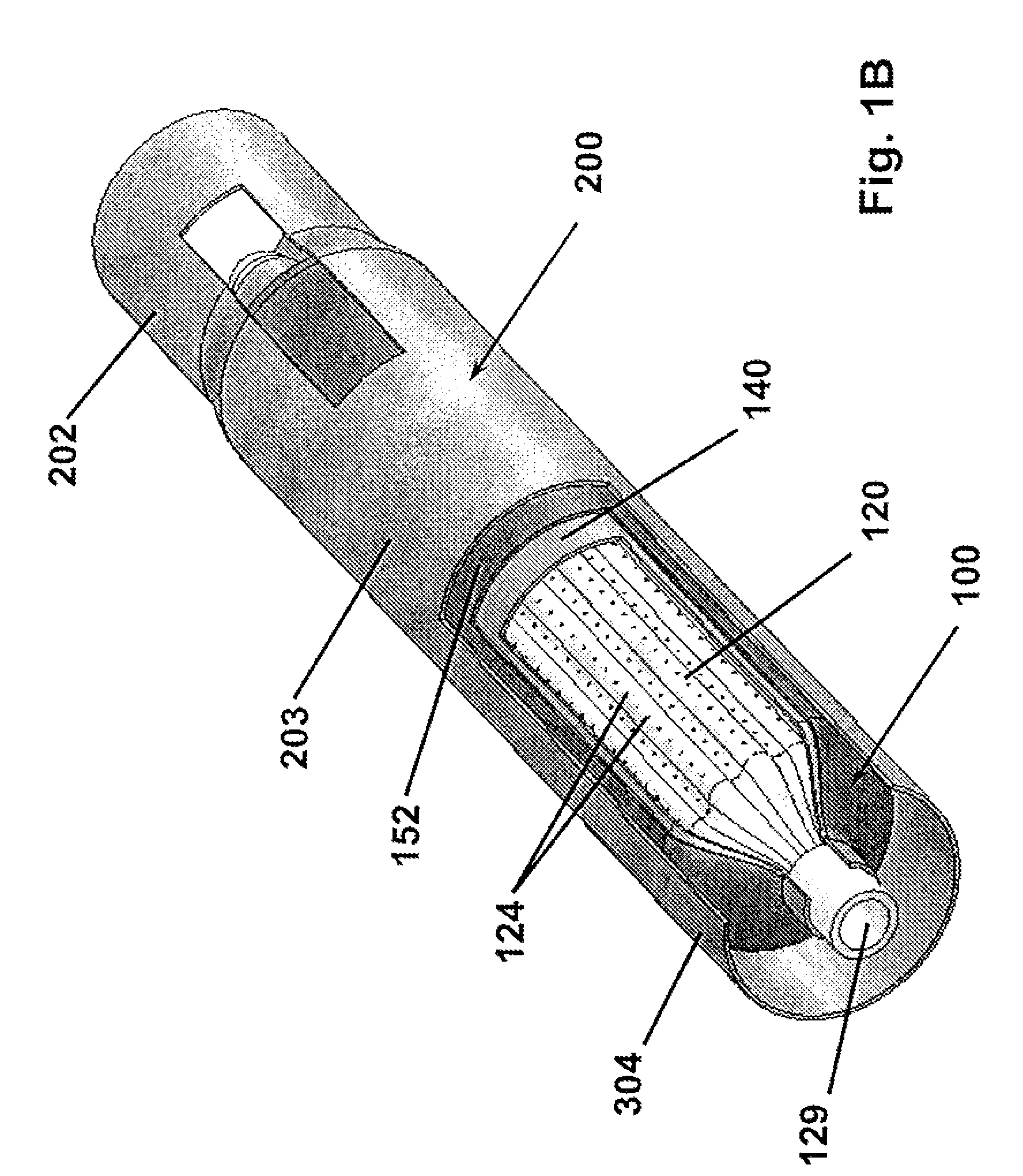Tubular expansion device and method of fabrication
a technology of tubular expansion and tubular expansion, which is applied in the direction of lighting and heating equipment, sealing/packing, and wellbore/well accessories. it can solve the problems of ineffective control of tubular expansion, risk of tubular collapsing, and significant more expensive or time-consuming
- Summary
- Abstract
- Description
- Claims
- Application Information
AI Technical Summary
Benefits of technology
Problems solved by technology
Method used
Image
Examples
Embodiment Construction
[0040]The present invention relates devices and methods for controlled expansion of tubular sections. An expandable bladder of this invention is formed about a structural element that maintains its shape in the linear direction and allows for the introduction of a pressurized fluid. In one preferred embodiment of the present invention, a novel bladder is formed over a removable shell which has been molded over a convoluted porous mandrel which in this embodiment forms the structural element. The bladder of this invention is formed incorporating reinforcing wound or woven fibers that are encapsulated in resilient fluid resistant bladder material. The bladder is capable of withstanding internal hydraulic pressures sufficient to controllably force expansion of a surrounding metallic tube without rupture and damage.
[0041]FIGS. 1A-B provide isometric views of the present invention according to one preferred embodiment. The apparatus 100 is shown in FIG. 1A in an unexpanded condition inse...
PUM
| Property | Measurement | Unit |
|---|---|---|
| angle | aaaaa | aaaaa |
| angle | aaaaa | aaaaa |
| angle | aaaaa | aaaaa |
Abstract
Description
Claims
Application Information
 Login to View More
Login to View More - R&D
- Intellectual Property
- Life Sciences
- Materials
- Tech Scout
- Unparalleled Data Quality
- Higher Quality Content
- 60% Fewer Hallucinations
Browse by: Latest US Patents, China's latest patents, Technical Efficacy Thesaurus, Application Domain, Technology Topic, Popular Technical Reports.
© 2025 PatSnap. All rights reserved.Legal|Privacy policy|Modern Slavery Act Transparency Statement|Sitemap|About US| Contact US: help@patsnap.com



